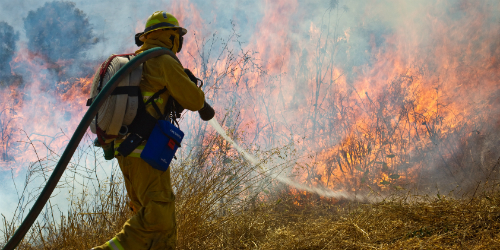Fire Response

As with most emergencies, notification of the appropriate authorities is the first response.
Unlike some other emergencies, many fires can be prevented if proper precautions are taken and yet they are one of the largest loss producers in the country – both in property and lives. Fires need at least fuel, oxygen, and heat to burn. Removing or controlling any one of these will reduce the likelihood of a catastrophic fire. The easiest to manage is the fuel because it’s tangible. Fires can start accidentally or be deliberately lit, and can easily grow out of control. That is why in the event a fire develops, preparation and a quick response are essential. All organizations are required to have a functioning fire response plan as part of their Emergency Action Plan. Organizations are required to provide methods to alert occupants in the event of a fire, and tools, such as fire extinguishers, to assist in containing a fire. Additionally, organizations are required to prepare a Fire Prevention Plan which addresses the ways that the organization uses to reduce the possibility of fire.
An important part of being prepared for any kind of emergency is knowing what to do when an alarm is given. Organizations will practice response through drills and simulations. These can involve a single organization and its employees, or a community as could be the case in a county or a city.
To get more information on the applicability of this program for a specific County operation please contact the corresponding departmental Safety Coordinator.
For further information on specific regulatory guidelines please refer to the link(s) below:
 Translate
Translate